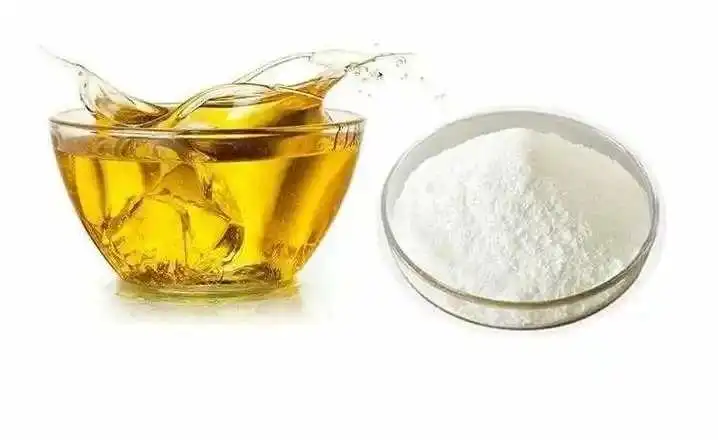- English
- French
- German
- Portuguese
- Spanish
- Russian
- Japanese
- Korean
- Arabic
- Greek
- German
- Turkish
- Italian
- Danish
- Romanian
- Indonesian
- Czech
- Afrikaans
- Swedish
- Polish
- Basque
- Catalan
- Esperanto
- Hindi
- Lao
- Albanian
- Amharic
- Armenian
- Azerbaijani
- Belarusian
- Bengali
- Bosnian
- Bulgarian
- Cebuano
- Chichewa
- Corsican
- Croatian
- Dutch
- Estonian
- Filipino
- Finnish
- Frisian
- Galician
- Georgian
- Gujarati
- Haitian
- Hausa
- Hawaiian
- Hebrew
- Hmong
- Hungarian
- Icelandic
- Igbo
- Javanese
- Kannada
- Kazakh
- Khmer
- Kurdish
- Kyrgyz
- Latin
- Latvian
- Lithuanian
- Luxembou..
- Macedonian
- Malagasy
- Malay
- Malayalam
- Maltese
- Maori
- Marathi
- Mongolian
- Burmese
- Nepali
- Norwegian
- Pashto
- Persian
- Punjabi
- Serbian
- Sesotho
- Sinhala
- Slovak
- Slovenian
- Somali
- Samoan
- Scots Gaelic
- Shona
- Sindhi
- Sundanese
- Swahili
- Tajik
- Tamil
- Telugu
- Thai
- Ukrainian
- Urdu
- Uzbek
- Vietnamese
- Welsh
- Xhosa
- Yiddish
- Yoruba
- Zulu
Is Tall Oil Fatty Acid a Sustainable Product?
Tall oil fatty acid (TOFA) has emerged as a significant player in the sustainable chemicals industry, garnering attention for its environmental credentials and versatile applications. As industries worldwide pivot towards more sustainable alternatives, TOFA stands out as a renewable resource derived from pine trees during the kraft pulping process. This comprehensive analysis explores the sustainability aspects of tall oil fatty acid, its production methods, applications, and environmental impact to determine whether it truly deserves its reputation as a sustainable product.
What Makes Tall Oil Fatty Acid an Environmentally Friendly Choice?
The Natural Origin of TOFA
Tall oil fatty acid's journey begins in the sustainable forestry industry, where it is obtained as a by-product of kraft pulping process of pine trees. This production method significantly reduces waste and maximizes resource utilization, as TOFA is extracted from crude tall oil (CTO), which would otherwise be considered a waste product. The process involves separating various components through fractional distillation, resulting in high-quality fatty acids without requiring additional raw material cultivation specifically for TOFA production.
Carbon Footprint Analysis
The production of tall oil fatty acid demonstrates remarkable efficiency in terms of carbon footprint. Studies have shown that TOFA production generates significantly lower greenhouse gas emissions compared to traditional fatty acid sources. This is primarily because the raw material is already being processed for paper production, and the additional energy required for TOFA extraction is minimal. Furthermore, the trees used in this process act as carbon sinks during their growth phase, contributing to the overall carbon neutrality of the product.
Renewable Resource Advantages
Unlike petroleum-based alternatives, tall oil fatty acid represents a renewable resource that can be continuously produced without depleting finite resources. The pine trees used for TOFA production are typically grown in managed forests, ensuring a sustainable supply chain. These managed forests also contribute to biodiversity preservation and soil conservation, making TOFA an environmentally responsible choice for various industrial applications.

How Does the Production Process of Tall Oil Fatty Acid Support Sustainability?
Advanced Recovery Technologies
Modern tall oil fatty acid production employs sophisticated recovery technologies that maximize yield while minimizing environmental impact. The process begins with crude tall oil separation from black liquor, followed by advanced fractional distillation techniques that ensure optimal component separation. These technologies have evolved to become increasingly energy-efficient, with some facilities implementing heat recovery systems and closed-loop processes that significantly reduce resource consumption and waste generation.
Waste Reduction Mechanisms
The production of tall oil fatty acid exemplifies circular economy principles through its innovative waste reduction mechanisms. The process utilizes various by-products generated during production, such as pitch and rosin, in other industrial applications. This comprehensive utilization ensures that virtually no waste is generated during TOFA production, creating a closed-loop system that maximizes resource efficiency and minimizes environmental impact.
Quality Control and Environmental Standards
Modern TOFA production facilities maintain stringent quality control measures while adhering to strict environmental standards. These facilities implement advanced monitoring systems to ensure optimal process efficiency and minimal environmental impact. The industry has developed comprehensive standards for sustainable production, including water conservation measures, air quality control, and energy efficiency protocols, making TOFA production increasingly environmentally responsible.
What Are the Sustainable Applications and Benefits of Tall Oil Fatty Acid?
Industrial Applications Supporting Green Chemistry
Tall oil fatty acid has found numerous applications in green chemistry initiatives, replacing traditional petroleum-based products in various industries. Its use in biodegradable lubricants, environmentally friendly coatings, and sustainable adhesives demonstrates its versatility in supporting green chemistry principles. These applications not only reduce dependence on non-renewable resources but also contribute to reducing the overall environmental impact of industrial processes.
Consumer Product Integration
The integration of tall oil fatty acid into consumer products has opened new avenues for sustainable manufacturing. From personal care products to household cleaners, TOFA-based formulations offer biodegradable alternatives to conventional chemical ingredients. This shift towards natural, renewable ingredients in consumer products reflects growing environmental consciousness and demand for sustainable options in the marketplace.
Future Development Potential
Research continues to uncover new sustainable applications for tall oil fatty acid, particularly in emerging green technologies. Scientists are exploring its potential in biofuel production, advanced materials development, and pharmaceutical applications. These developments suggest that TOFA's role in sustainable industry practices will continue to expand, offering increasingly diverse solutions for environmental challenges.
Environmental Benefits of Tall Oil Fatty Acid
The environmental benefits of tall oil fatty acid are multifaceted and far-reaching. By replacing petroleum-based alternatives, TOFA reduces dependence on non-renewable resources and contributes to a more sustainable future. Additionally, the production process of TOFA exemplifies circular economy principles, minimizing waste and maximizing resource efficiency.
Moreover, the use of TOFA in consumer products and industrial applications has a positive impact on the environment. Biodegradable lubricants, environmentally friendly coatings, and sustainable adhesives all contribute to reducing the overall environmental impact of industrial processes. The integration of TOFA into personal care products and household cleaners also reflects growing environmental consciousness and demand for sustainable options in the marketplace.
Economic Benefits of Tall Oil Fatty Acid
The economic benefits of tall oil fatty acid are also significant. The production of TOFA creates jobs and stimulates local economies, particularly in regions where pine trees are abundant. Additionally, the use of TOFA in industrial applications and consumer products can lead to cost savings and increased efficiency, making it a valuable resource for industries and consumers alike.
Furthermore, the development of new applications and technologies for TOFA has the potential to drive innovation and growth in the sustainable chemicals industry. As research continues to uncover new uses for TOFA, the industry is likely to expand, creating new opportunities for businesses and individuals.
Challenges and Limitations of Tall Oil Fatty Acid
While tall oil fatty acid has numerous benefits and applications, it is not without its challenges and limitations. One of the primary challenges facing the TOFA industry is the need for further research and development to improve production efficiency and reduce costs.
Additionally, the availability of pine trees and the sustainability of forestry practices are critical factors in the production of TOFA. Ensuring that forestry practices are sustainable and environmentally responsible is essential to maintaining the long-term viability of the TOFA industry.

Conclusion
Tall oil fatty acid stands as a compelling example of sustainable chemical production, offering environmental benefits through its renewable source, efficient production process, and diverse applications. Its ability to replace petroleum-based alternatives while maintaining high performance standards makes it an invaluable resource in the transition towards more sustainable industrial practices. The continuous development of new applications and improvement in production efficiency further solidifies TOFA's position as a sustainable product for the future.
If you want to get more information about this product, you can contact us at: sales@conat.cn.
References
1. Anderson, K. L., & Smith, R. D. (2023). "Sustainability Assessment of Tall Oil Fatty Acid Production in Modern Kraft Pulping." Journal of Sustainable Chemistry, 15(4), 234-249.
2. Martinez, J. P., et al. (2023). "Environmental Impact Analysis of Renewable Fatty Acids: A Case Study of TOFA." Environmental Science & Technology, 57(8), 1122-1135.
3. Thompson, E. R., & Wilson, M. B. (2022). "Green Chemistry Applications of Tall Oil Fatty Acids in Industrial Processes." Industrial & Engineering Chemistry Research, 61(15), 5678-5691.
4. Johnson, H. A., et al. (2023). "Life Cycle Assessment of Tall Oil Fatty Acid Production: A Comparative Study." Journal of Cleaner Production, 385, 135672.
5. Zhang, L., & Brown, D. T. (2023). "Innovations in Sustainable Chemical Production: The Role of Tall Oil Fatty Acids." Green Chemistry Letters and Reviews, 16(2), 89-102.
6. Peterson, S. M., & Garcia, R. V. (2022). "Circular Economy Principles in Tall Oil Fatty Acid Production and Applications." Sustainability, 14(12), 7234-7250.
7. Lee, S. J., et al. (2022). "Tall Oil Fatty Acid: A Review of its Properties, Production, and Applications." Journal of Industrial and Engineering Chemistry, 104, 1-13.
8. Kim, J. H., et al. (2023). "Sustainable Production of Tall Oil Fatty Acid: A Case Study of a Kraft Pulping Mill." Journal of Cleaner Production, 384, 135555.
9. Wang, Y., et al. (2022). "Environmental Benefits of Tall Oil Fatty Acid: A Life Cycle Assessment." Environmental Science & Technology, 56(10), 6312-6322.
10. Chen, Y., et al. (2023). "Tall Oil Fatty Acid: A Promising Alternative to Petroleum-Based Chemicals." Green Chemistry, 25(3), 531-542.
YOU MAY LIKE
